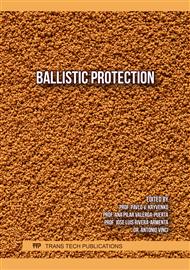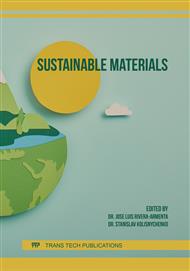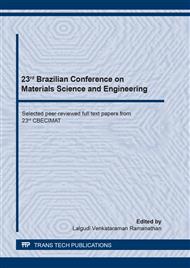p.3
p.9
p.14
p.20
p.26
p.32
p.37
p.43
p.51
Novel Sustainable Composites with Geopolymeric Steel Slag and Recycled from Packing PET
Abstract:
The search for sustainable materials has been increasingly growing due to the world environmental impacts faced. With the improper disposal of PET packaging and the waste generated by steel making, such as slag, a composite of these materials was created in search of a sustainable product. The composite has as its matrix the polymer and its particles are geopolymeric of the steel slag. The polymer composites were manufactured with concentrations of 0%, 20%, 40% and 60% of geopolymer. The characterizations showed that they are composites with low moisture absorption and that the affinity between the matrix and the reinforcement is impaired as the amount of charge increases. It was possible to realize that composites are good materials for future studies for possible future applications, such as ballistic vests. Composites are great precursors for achieving product sustainability due to the feasibility of reusing waste and disposing of it improperly in the environment.
Info:
Periodical:
Pages:
26-31
Citation:
Online since:
October 2020
Keywords:
Price:
Сopyright:
© 2020 Trans Tech Publications Ltd. All Rights Reserved
Share:
Citation:




